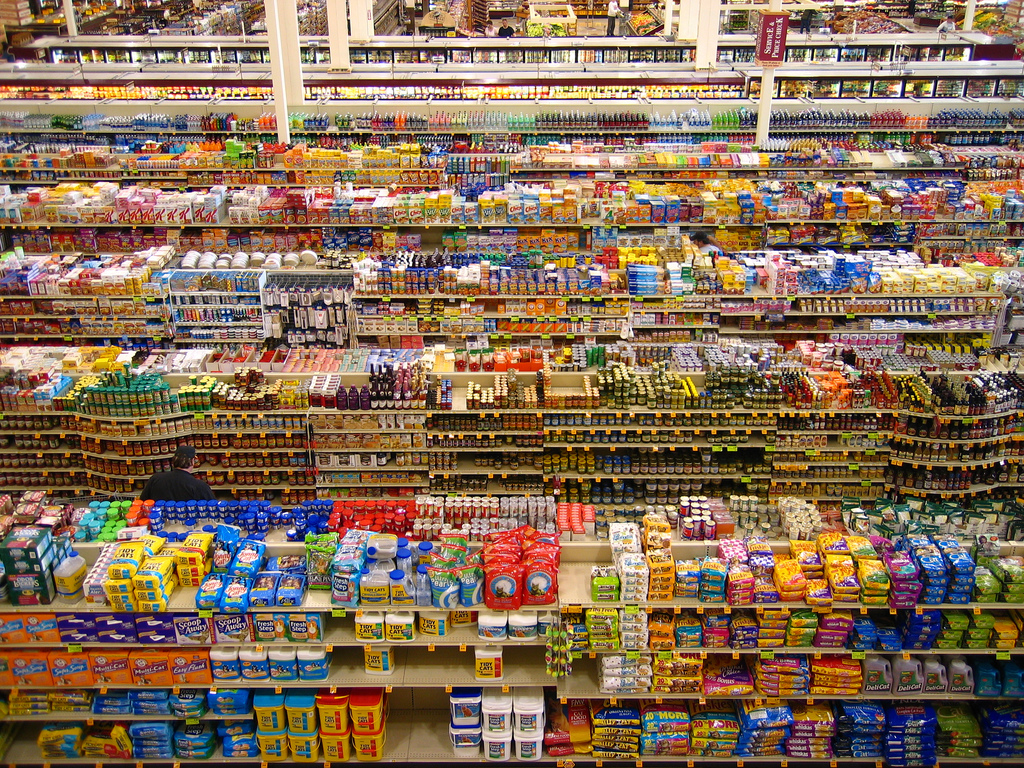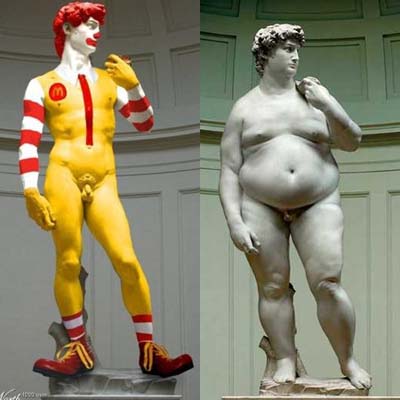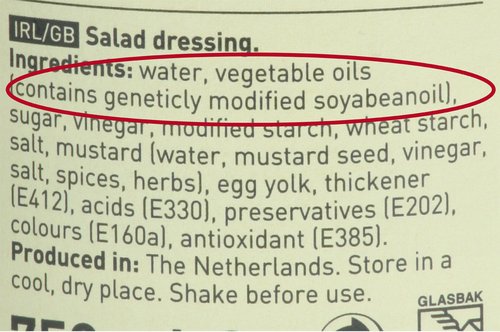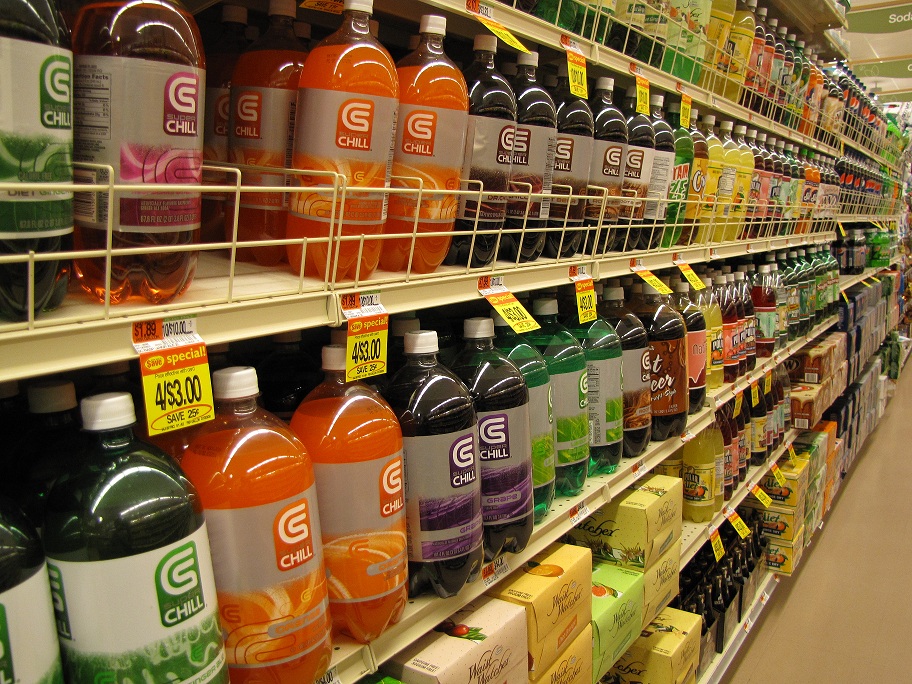Processed food
Processed food
 Processed food fills the aisles of your favorite grocery store. With all that attractive packaging there is plenty to catch your eye.
Processed food fills the aisles of your favorite grocery store. With all that attractive packaging there is plenty to catch your eye.
The boring part is to turn the package over and try to read and understand the ingredients list. You have to read the ingredients with the understanding that everything might not even be included on the ingredient list. That’s because food manufacturers are not required to put everything on the list.
Every day, 7 percent of the U.S. population visits a McDonald's, and 20-25 percent eat fast food of some kind, says Steven Gortmaker, professor of society, human development, and health at the Harvard School of Public Health. As for children, 30 percent between the ages of 4 and 19 eat fast food on any given day.
But that's just the tip of the iceberg. Americans get processed food not only from fast-food restaurants but also from their neighborhood grocery stores. As it stands, about 90 percent of the money that Americans spend on food is used to buy--that's right--processed foods.
 Are there additives designed to stimulate or induce cravings? What if ingredients in Product A and ingredients in Product B combine to cause neurological problems – what caused the problem? As you can see, consumers are at a huge disadvantage.
Are there additives designed to stimulate or induce cravings? What if ingredients in Product A and ingredients in Product B combine to cause neurological problems – what caused the problem? As you can see, consumers are at a huge disadvantage.
The FDA has a list of around 3,000 additives but the number in existence is much much higher. There are currently more than 14,000 laboratory-made chemicals added to our foods to improve quality, shelf life, flavor, and appearance.
f you are trying to build your muscles there are many types of foods you should take out of your diet. You can do it all at once or slowly eliminate the bad food items. Bodybuilding foods are rich in protein and complex carbs. When working out for muscle growth you should avoid sugary foods that contain simple sugars and refined carbohydrates.
If you eat processed foods you want to get them out of your diet as soon as possible. Processed foods are horrible for your body.
One should see this in prespective though. If you drink a few glasses of alcoholic beverages it won’t harm you, if on the other hand you drink a bottle of whiskey per day, alcohol is bad. It’s the same with processed food and junk food. Once a week a Junk-day is famous amoung bodybuilders. A few potato chips, Doritos, cheese curls, etc won’t hurt you, but eating a whole bag lying on your couch before the tube, will!!
Stop going to fast food restaurants. These are big offenders of processed foods. You can eat the salad and yogurts but stay away from the burgers, fries, deep fried chicken, etc. If you purchase a salad choose a low fat/low calorie dressing. You may want to start making your own salad dressing so you know that there are not mysterious chemicals in it.
Now I would like to introduce a legalistic term “Plausible Deniability”. The reason why this term is so important is because Its impossible many times to pin down with certainty what caused a specific ailment when so many variables are in the mix. That is the case with processed food.
Now many people just glaze over when confronted with trying to understand these labels and shop wisely, especially when the fastest and cheapest is what we should avoid.
There are communities where fresh vegetables and fruit are not available, and yet, fast food restaurants are within walking distance. It has quickly become the new norm, and that’s not good for your health.
One fact is undeniable, in addition to the well known diseases, i.e. (Cancer, Diabetes, Heart Disease, Arthritis, Chronic Fatigue, Fibromyalgia, etc.) – There is an ever growing list of Neurological diseases that seem to be more recent (ADD, ADHD, Obesity, Autism ect.). When contemplating how to adjust your diet to prevent disease – Everything you come in contact with matters!.
The secret code of the E-numbers
 Occasionally there is controversy about the E numbers in our diet. E-numbers are in almost all processed foods. In particular, the group of AZO dyes, flavor enhancer E621 and sweetener E-951 are controversial, but they were by European Food Safety Authority (EFSA) as safe reviewed. What is it, why is there concern about E102, E-621 and E-951?
Occasionally there is controversy about the E numbers in our diet. E-numbers are in almost all processed foods. In particular, the group of AZO dyes, flavor enhancer E621 and sweetener E-951 are controversial, but they were by European Food Safety Authority (EFSA) as safe reviewed. What is it, why is there concern about E102, E-621 and E-951?
E-numbers: what are they?
E-numbers are substances added to food to improve them, for example, for longer shelf life, better taste, appearance or a nicer color. E-numbers are only allowed if it is established that they are safe. There is always a limit for an acceptable daily intake calculated, which is based on the most vulnerable group. See also Posts nutrition
research often hogwash, Schippers on astray. Although many consumers do not expect these are still the best researched nutrients that ourdiet contains. So why the fear?
E-numbers controversial?
Quite often stories in the media about the harmfulness. Told Will Smith, author of the book "What's in your food" in a broadcast of TROS Radar that E-102 would cause ADHD and eczema, the flavor enhancer E-621, the appetite promoting and E-951 would brain tumors can cause . How about this now with these substances?
AZO dyes, ASO-effects?
The yellow dye E102 Tartrazine belongs to the azo dyes. Several studies found no correlation be demonstrated between the use of azo-dyes and ADHD, but there is no evidence that it is not there. Also there are no allergic reactions demonstrated by the use of tartrazine, but people who are allergic to salicylates may have experienced a
hypersensitivity reaction to the use of tartrazine. Also, the existing allergic reactions or strengthening. Tartrazine may aggravate asthma attacks in people who are sensitive, but this is not every asthma patient is the case.
Chinese restaurant syndrome
The flavor enhancer E-621 is also known as monosodium glutamate (MSG), sodium glutamate, ajinomoto and monosodium glutamate. It is widely used in oriental cuisine and is then listed on the label as ajinomoto or monosodium glutamate. The taste of sodium glutamate as the fifth taste umami indicated, in addition to sweet, salty, sour and bitter. Glutamate is a sodium salt of glutamic acid, one of the 20 amino acids from which proteins are constructed. The human body can also be self-glutamic acid, so that it is not necessary to make this aminoacid with the food to be included. Glutamic acid occurs naturally in meat, fish, milk and milk products and cereals.
E-621 was held responsible for the Chinese restaurant syndrome, which symptoms were reported as dizziness, faintness and palpitations, but here is no scientific evidence provided. Trade names of MSG include Ajinomoto, Vetsin and Accent. MSG is 'hidden' in many other names, such as yeast extract, hydrolised protein and flavoring. //www.youtube.com/watch?v=txiVDY-prk4
 Sweet Maker
Sweet Maker
The flavoring E-951, known as aspartame, is made up of the amino acids aspartic acid and phenylalanine. People with phenylketonuria (PKU) aspartame should be avoided, because they can not break down phenylalanine. Aspartame is claimed that the would cause cancer, but the study in which this was demonstrated was carelessly set. Because this publication caused much turmoil, the European Food Safety Authority (EFSA) re-examined this substance and it is classified as safe.
Food industry and government
The food is mandatory for all ingredients on the label, but E-numbers raise concerns among consumers. That's why manufacturers increasingly to the substance name instead of the E-number in an unreadable small font on the food to mention, so consumers often can not read. This gives fear gurus free reign to the distrust of the public regarding the E-numbers continue to stir. In the broadcast of TROS Radar called for stricter rules for the entry of E-numbers on the label and that the safety of these substances should be re-examined. Fortunately, EFSA already planned to ensure the safety of all E-numbers to reassess and review of aspartame has already occurred.
What about the consumer ?
Consumers who are concerned about the E-numbers can find more information about the safety of these substances. But if someone has a substance will not tolerate the ambiguous labels difficult to properly determine whether a food is safe or not be used. This is really specialist help from a dietitian is required because no other
professionals who are suitably trained. And that is another reason to argue that the cutbacks of the dietary care of the basic package is reversed because the dietitian can help you get the secret codes of the E-numbers to unravel
To see how the political arena in which that would lead, you should watch the
Canadian documentary "The World According to Monsanto" .
This movie is about the use and abuse of science in the introduction of
aspartame which like Monsanto passes
(www.youtube.com/watch?v=ytUO8WC6-38
Here are 5 grocery items that should never make it through the checkout line.
1. Simple Sugars or Carbs and Unhealthy Fats
Skip foods laden with simple sugars, also called simple carbohydrates. Sugary breakfast cereals, donuts, pastries, cookies, ice cream, cakes and soda are loaded with them. Often referred to as “empty calories,” simple sugars are rapidly absorbed, spiking blood sugar levels for an initial energy high. This triggers an insulin reaction, driving levels back down and creating fatigue. You’ll feel hungrier and crave even more sugar. Plus those rapidly absorbed extra calories are stored as fat, putting you at risk for obesity.
Make smart choices by selecting fiber-rich complex carbohydrates, including 100% whole grain bread, brown rice or steel-cut oats. Select whole foods such as fresh vegetables and lean meats. These all provide slow, sustained releases of energy for long-lasting fuel. If you do crave something sweet, head for the produce aisle and pick out your favorite seasonal fruits such as pears, apples, or blueberries.
Processed sweets and goodies also contain saturated and trans fats that clog arteries and stunt weight loss. Instead purchase items rich in heart-healthy monounsaturated fats, like avocados and nuts.
2. Meats High in Nitrates and Saturated Fats **
Processed meats such as cold cuts, bacon, sausages and hot dogs contain nitrates, chemical additives that preserve freshness. Nitrates have been linked to stomach cancer and other degenerative diseases. These fatty meat products are also full of unhealthy saturated fat that can raise levels of “bad” LDL cholesterol, a risk factor for heart disease and strokes.
Ditch preserved meats altogether or look for ones that are advertised as “nitrate-free.” Buy meats low in saturated fats such as chicken and turkey or eat more fish, like salmon or tilapia, rich in healthy omega-3 fats. If you must have red meat, choose organic lean cuts like sirloin or tenderloin.
3. Ingredients You Can’t Pronounce
Does ferrous sulfate, thiamine mononitrate or partially hydrogenated soybean oil sound appetizing to you? Follow this rule of thumb: if a food product is made of stuff you need a course in chemistry to comprehend – or —if you can’t pronounce the first 5 ingredients, don’t let it near your cart.
Stay focused on buying whole foods comprised of only 1 ingredient. Instead of snacking on neon-orange cheese curls, slice up some carrots or celery sticks. Invest in an air popper and enjoy fiber-rich popcorn. Make homemade veggie chips: cut up kale, thinly slice beets, sweet potatoes or yams, sprinkle them with herbs and a little olive oil and bake in the oven.
4. Fake Health Foods
Fake health foods are those deceptive foods, billing themselves as “low in fat”, like certain cookies, salad dressings or yogurt brands. Look closely at their labels. To make up for flavor, these items are inevitably high in sugar or salt. Other tricky foods include packaged breads and crackers with labels stating “contains whole grains.” This often translates into considerably less fiber than 100% whole grain products. An other example is "Milk & Fruit". You think, milk and fruit must be healthy, but if you look closely there are 26 cubes of sugar in a 200 ml pack, which is a lot!!
Again, choose real foods as much as possible. If it’s a sweet tooth you need to satisfy, buy tasty dried fruits, such as apricots or mangos.
5. Canned Foods High in Sodium
Eighty percent of our sodium intake comes from processed and canned foods. In fact, many canned foods are so chockfull of salt, they contain half or more of your daily recommended intake. A diet high in sodium is dangerous since it can lead to high blood pressure.
Instead of buying canned soups, try making your own simple versions, like a healthy cream of carrot soup or hearty lentil. If you don’t have the time to cook, purchase canned soups low in sodium.
To lower your overall sodium intake, try seasoning foods with more herbs, both dried and fresh. You’ll rely less on table salt for flavor.
- Login to post comments


